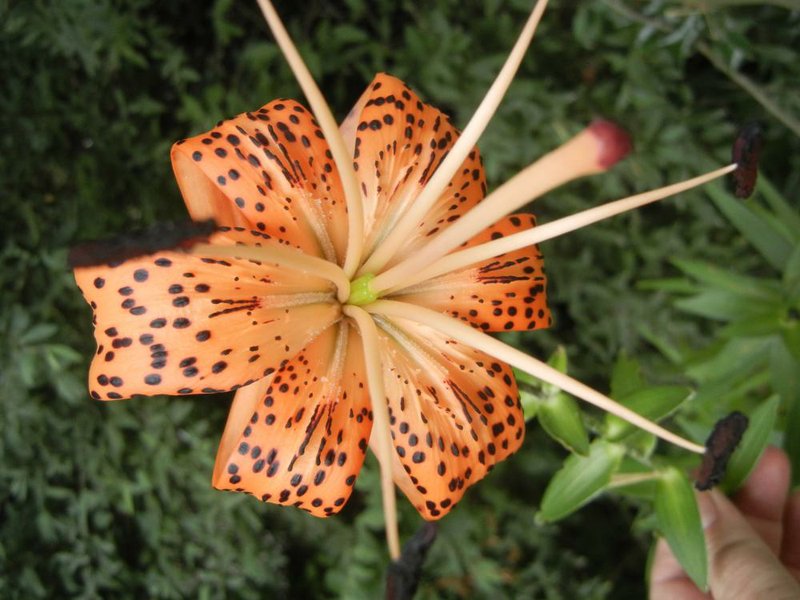LITTLE ROCK — Q Many of my roses, Knock-Outs and a few other types, have been diagnosed with rose rosette disease. I first noticed that many of my 40 Knock-Out roses in the front yard looked kind of odd - there are strange branches shooting out that are very pink-stemmed that are tipped with a tight knot of rose blooms that also didn’t look quite right. We had our landscape people come in and dig up all the 40-plus Knock-Outs as well as the gorgeous New Dawn climbers all along the side and back of our property - they were beginning to show the first signs of it. My question is - are we facing an epidemic?
These Knock-Outs are supposed to be resistant types, and they are all over town. We live in the Heights bordering Little Rock Country Club, but I think I may have seen the first signs of this disease on plants way out in the Chenal Promenade.
A To my knowledge, no roses are totally resistant to rose rosette.
Some are more susceptible than others, but they can all get it. The disease is a virus, and there are no sprays or cures for viruses. It is usually spread from insect feeding, particularly by a mite. I wouldn’t classify it as an epidemic, but we have been seeing more cases of rose rosette in recent years. It could be a combination of things.
Drier years tend to give us a larger mite population - and we have had two really dry seasons. Secondly, there are a lot of roses in our landscapes. The success of the Knock-Outs as long-season, almost bulletproof plants has led a lot of people to plant them in. As with any disease, you have to have a susceptible host, the right environment and the introduction of a pathogen. If you have a lot of host plants, when a disease hits, it can multiply. You are correct that there is no cure. I am not sure you need to remove all roses from your landscape, just those affected. Spraying to control mites can also help.
Q My dwarf gardenias were full of blooms this year but lasted only a couple of weeks. What can I do to prolong the blooming period?
A Different varieties bloom at different rates. I have a Kleim’s Hardy or Daisy gardenia. It has a simple flower and when it is in bloom, it is a solid mass of white flowers that all bloom at one time. But it only lasts about a week. My double-standard gardenia blooms for at least a month with flower buds opening over an extended period.
Some varieties re-bloom, such as August Beauty and Jubilation.
Q I want to know what the name of this beautiful flower is that I saw in front of a house in Malvern. I want one.
A The plant is commonly called a tiger lily. They are one of the showiest of the lilies and the plants can get quite large. One of the downsides (if there are downsides) is that the flowers hang down instead of standing upright.
Q I need some information concerning a crape myrtle plant.
It came with the house eight years ago and was then a well-established plant that has bloomed beautifully every summer. A couple of days ago I noticed that the blossoms were not as dark pink as in previous years, and upon further inspection I noticed that the leaves of the whole plant were sticky.
I had never seen this on this plant in previous years and am now worried about what to use to treat it. I did spray the whole plant with Sevin bug spray but don’t know how to proceed.
A It looks to me like you have a heavy infestation of aphids. As these sucking insects feed, they give off a very sticky substance called honeydew - that is what is causing the sticky, shiny substance on the leaves. Left long enough, the sticky honeydew will turn black, as black sooty mold begins to form. Sevin is not a good insecticide for sucking insects. You can use a contact pesticide such as insecticidal soap or Malathion or Orthene, which is a systemic. Even a strong spray of water can dislodge them. Aphids multiply rapidly in ideal conditions and can quickly explode in population.
Q I had a beautiful lilac bush that was just gorgeous at Easter. It had more blooms than ever before. We planted it six years ago. It came through the summer heat last year just fine, and then within two weeks after Easter, the bush was dead. The leaves were all dried up and curled. No sign that I could see of bugs. Could you tell me what could cause this? I have another lilac bush 30 feet away, and it is fine so far.
A The fact that it died so quickly indicates something has either killed the roots or girdled it at the soil line. It could be either a root rot or borers. Check the plant at the soil line for signs of borers - holes in the stem. If you have a heavy soil and it got over watered, the cause could be a root rot. When you remove the plant, check the root system. Is it full and white, or black and slimy? Is there any odor?
Sliminess and odor are all indications of root rot. If you still can’t determine any cause, take it to your local county Extension Service office to send to our disease diagnostic lab.
Janet Carson is a horticulture specialist for the University of Arkansas Cooperative Extension Service. Write to her at 2301 S. University Ave., Little Rock, Ark. 72204 or e-mail her at
HomeStyle, Pages 36 on 06/30/2012

